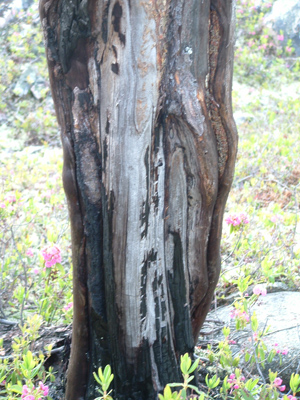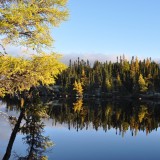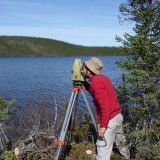Overlapping fires in the Québec taiga, Jessie Héon M. Sc.
The objective of this projet was to understand how successive fires overlap in the fire-prone, northern Québec taiga. We tested the widespread but poorly documented idea that new fires occur independently of time since previous fire because fire activity is more strongly determined by severe fire weather than through the postfire recovery of forest fuels.

Figure 1: Cicatrices de feux multiples sur un pin gris de la taïga du Québec. Le dénombrement des cernes annuels de croissance permet de dater l’année de chaque feu.
We have performed a detailed reconstruction of fire lengths and fire interval duration during the last 200 years over a 190-km section of the James Bay Road in northern Québec. We have sampled more than 2000 fire scars on living and dead trees (Figure 1) in order to obtain the year of past fires by couting tree rings in fire-scarred stem cross-sections. We have detected several immense fires that crossed the road over more than 50 km during the dry years of 1922, 1941, 1989 and 2013. The recurrence of large fires in association with severe fire weather suggests that fire activity is likely to increase with the anticipated climate warming.
However this potential increase in fire activity is not without limit. Time intervals between successive fires have been much longer than expected under the assumption that fires occur independently of time since previous fire. This indicates that fire recurrence is also strongly influenced by the time available for postfire fuel recovery. The probability of fire occurrence increases with postfire time and stabilises after about 50 years. This resistance of the boreal forest to high burn rates is thus especially effective is fire-prone regions where young forest stands are over-abundant. We believe that this new knowledge will help us predict where the next large fires are likely to occur.
Référence:
Héon, J., D. Arseneault et M.-A. Parisien. 2014. Resistance of the boreal forest to high burn rates. Proceedings of the National Academy of Sciences of the USA, 111 : 13888-13893.


